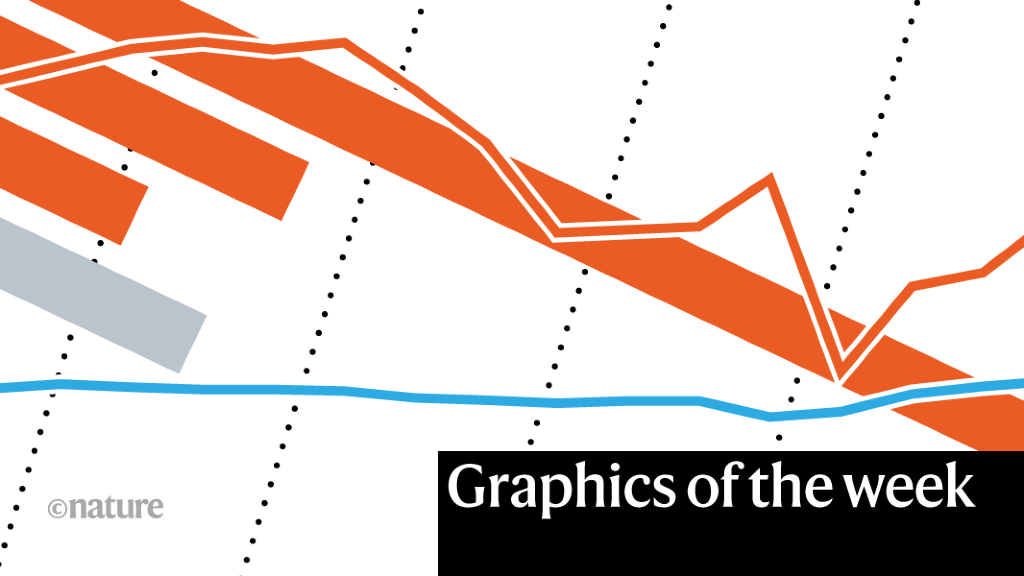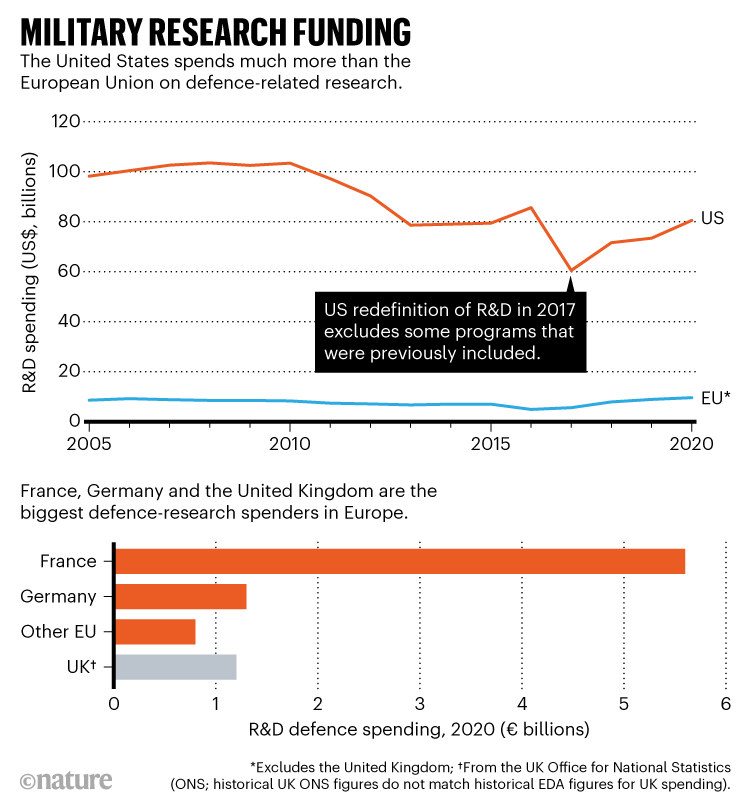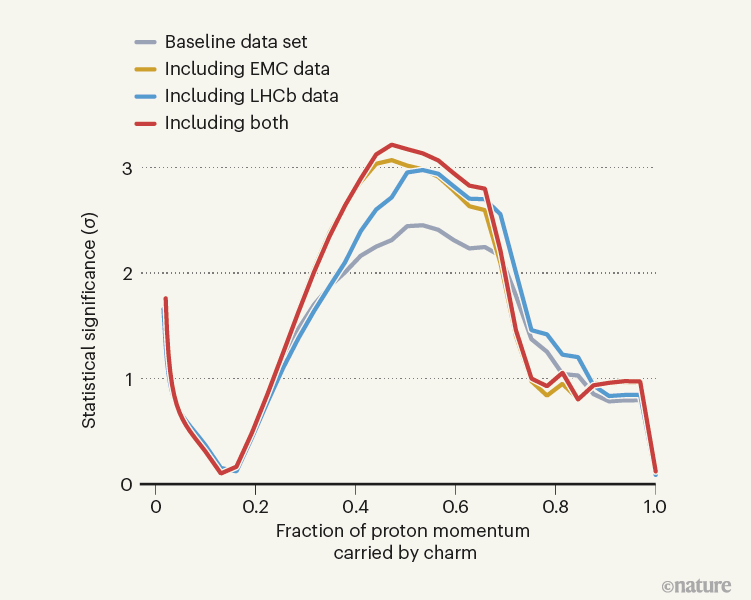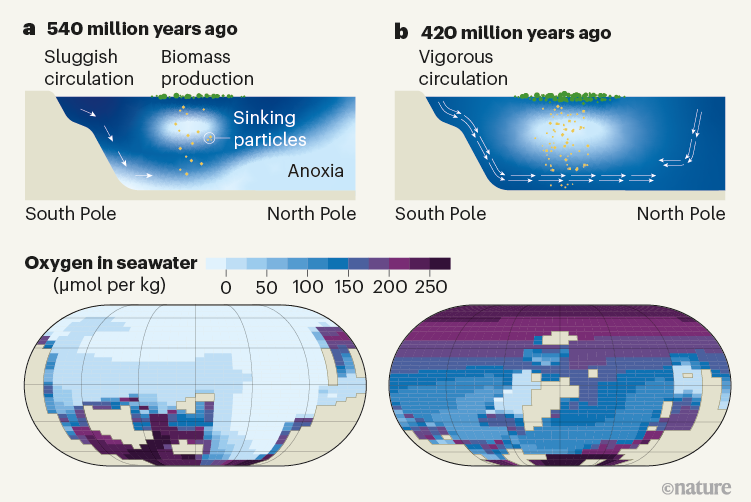Who spends on defence research?
Russia’s invasion of Ukraine in February has stirred European interest in ploughing more money into defence research and development (R&D). Three countries account for the bulk of Europe’s defence R&D. France currently spends the most (€5.6 billion; US$5.6 billion), followed by Germany, according to the European Defence Agency in Brussels. The United Kingdom, which is no longer in the European Union, is the region’s other major funder. For decades, the three countries had been reducing their spending as they increasingly relied for their protection on the umbrella of NATO (the North Atlantic Treaty Organization), along with partnerships with the United States and the unlikelihood of war in Europe. European defence spending is still far overshadowed by that in the United States.
The proton’s intrinsic charm
Physics textbooks describe the proton as a subatomic particle that contains three quarks, bound together by elementary particles known as gluons. But quantum theory predicts that the proton can also contain quark–antiquark pairs, including some quarks — known as charm quarks — that are more massive than the proton itself. These are thought to be ‘intrinsic’, meaning that they are part of the proton over long timescales and are not produced by interactions with an external particle. However, attempts to confirm intrinsic charm in experiments have so far fallen short. In a paper in Nature, the NNPDF Collaboration reports an analysis of collision data that acts as evidence — if not the discovery — of intrinsic charm in the proton.
The collaboration used machine-learning techniques to analyse experimental data sets and found intrinsic charm present in the proton with a statistical significance of 2.5 times the standard deviation (σ). The baseline analysis excluded measurements made by the European Muon Collaboration (EMC) in the early 1980s — data that are generally thought to be too imprecise to be conclusive — and those announced in July 2021 by the LHCb collaboration at the Large Hadron Collider at CERN, Europe’s particle-physics laboratory near Geneva, Switzerland. Including these data in the analysis had the effect of increasing the statistical significance to 3σ, which is considered evidence of an effect in particle physics.
Plate tectonics controls ocean oxygen
This graphic shows how the position of continents might have influenced ocean circulation and oxygen levels. Authors of a paper in Nature simulated the state of the global ocean at 28 time points spanning the past 540 million years — longer than any previous effort — given the continental configuration at each time point. The results show that surface oxygen concentrations are mostly temperature-driven, with cold waters being more oxygenated than warm waters.
a, During the early Palaeozoic era, 540 million to 460 million years ago, ocean circulation was sluggish, leading to very low oxygen levels (anoxia) in the deep ocean. The lower panel shows simulated data for deep-ocean oxygen in the same period. Low-oxygen regions also form when organic particles, sinking from biomass at the surface, are decomposed by microorganisms. b, By contrast, circulation in more recent periods could be vigorous, oxygenating the deep ocean. Higher rates of biomass production at the surface might have produced larger low-oxygen regions during some periods. This News & Views article explains more.










More News
Judge dismisses superconductivity physicist’s lawsuit against university
Future of Humanity Institute shuts: what’s next for ‘deep future’ research?
Star Formation Shut Down by Multiphase Gas Outflow in a Galaxy at a Redshift of 2.45 – Nature